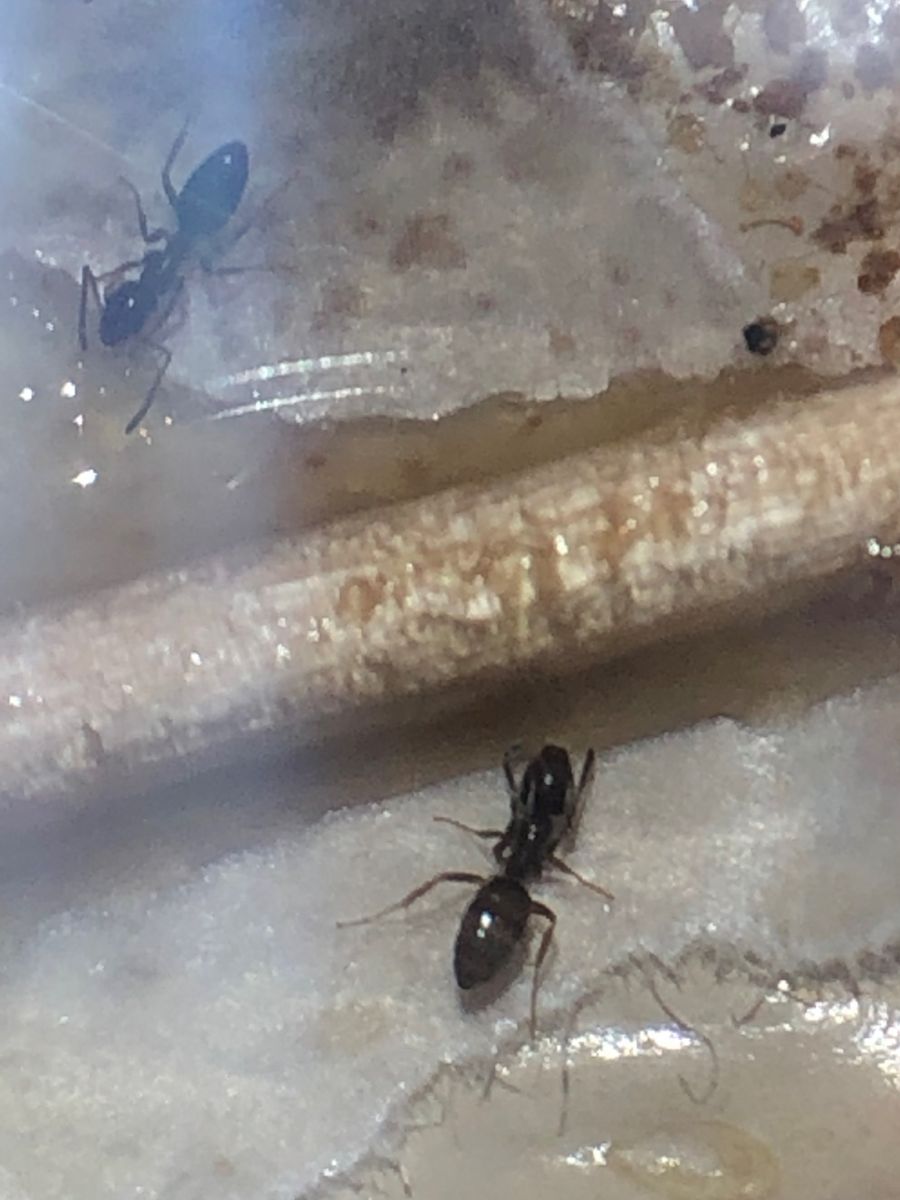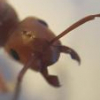1. Location of collection (ie: park/area, city/town, state/province, country).
- Plastic pipe from irrigation system (near broken head - they got in the crack)
2. Date of collection (more important for ID's of queens).
- July 6, 2019. Collected as a small colony (Queen + 80-100 each of workers and egg/larva/pupa). There were more workers/brood, but I was unable capture all of them as they'd started moving some brood to safety after I disturbed their nest site.
3. Habitat of collection (ie: desert scrub, oak forest, riparian, etc.).
- Suburban landscaping - woody and wet, but may not indicate much about habitat
4. Length (to the nearest millimeter or 1/16th of an inch.)
- 2.5 to 4 mm (workers). Queen - hidden
5. Coloration, hue, pattern and texture (ie: dark redish-orange head, velvet-like gaster, translucent, hairy/bald, shiny/dull, etc.).
- Almost totally black. Thorax may be slightly reddish, but very slight. Some photos show fairly enlarged gasters - they just devoured a huge mound of honey yesterday and are quite full. Not all specimens have that large of gaster.
6. Distinguishing characteristics (ie: one petiole node/two petiole nodes, length and orientation of any spines or bumps on the thorax or waist, head shape, eye size, shape of mandibles, number of antennal segments, etc.)
- Hard to say - only have 15x phone macro lens
7. Anything else distinctive (ie: odor, behavior, characteristics relative to others in the colony, etc.).
- Love honey, sugar-water is largely ignored, fruit (grapes, cherries, mango, etc) are accepted but not with the gusto of honey. Eats pretty much any protein I offer.
8. Nest description (if you can find the nest, and you're sure it belongs to the ant you collected) (ie: rotted log, volcano-shaped mound of coarse gavel 10cm in diameter, etc.).
- see collection - plastic pipe
9. Nuptial flight time and date (if you witnessed the ant or it's colony having a nuptial flight or caught an alate you are confident was flying that day or time)
- n/a
10 . Post the clearest pictures possible of the top, side, and face of the ant in question, and if possible, their nest and the habitat they were collected in.
- No photo available of the queen - she's camera shy. Workers attached. Sorry for the low quality. That is a toothpick cross-section in the picture for scale as well.

Edited by fdiwen, September 7 2019 - 3:40 AM.


















